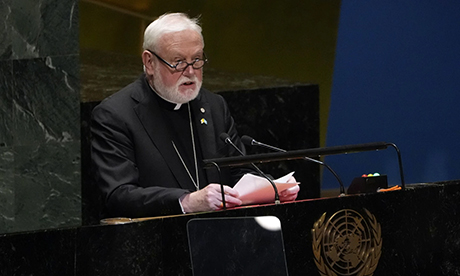The Holy See’s foreign minister addressed the UN General Assembly, calling for a halt to the deployment of lethal autonomous weapons systems.
Archbishop Paul Gallagher joined a chorus of concerns raised by various speakers regarding artificial intelligence (AI).
“It is imperative to ensure adequate, meaningful and consistent human oversight of weapon systems,” Gallagher said.
“Only human beings are truly capable of seeing and judging the ethical impact of their actions, as well as assessing their consequent responsibilities.”
UN advisory board on AI
Additionally, the Vatican advocated for the establishment of an international organisation focused on AI to promote scientific and technological exchange for peaceful purposes and the common good.
The United Nations plans to convene an expert advisory board on AI to explore the science, risks, opportunities and governmental approaches surrounding this technology.
AI has become a central point of interest for nations, multinational groups and tech companies, sparking discussions about its potential benefits and risks.
As a non-voting “permanent observer” in the UN, the Holy See delivered one of the most extensive remarks on AI during the assembly.
Archbishop Gallagher highlighted Pope Francis’s concerns about the digital world, including: “It is not acceptable that the decision about someone’s life and future be entrusted to an algorithm.”
Killer robots
Gallagher called for immediate talks to establish a legally binding agreement governing lethal autonomous weapons systems, often called “killer robots.” He proposed “a moratorium on them pending the conclusion of negotiations.”
UN Secretary-General António Guterres has also supported banning systems that operate without human control or oversight and violate international humanitarian law.
Additionally, Guterres urged countries to work towards a legally binding prohibition by 2026.
However, concerns have arisen about the potential limitations such a prohibition might impose, especially if adversaries or non-governmental groups develop similar systems. Questions persist regarding the distinction between autonomous weapons and existing computer-aided systems.
